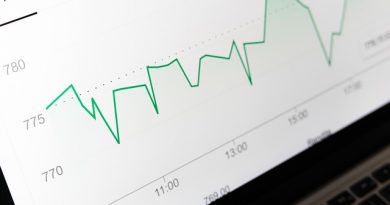What is Stock Volatility?
Volatility is a measure of the rate and magnitude of the change in the stock's value (up or down) of the underlying which is stated as a percentage over one-year. A higher volatility means there is more than average price changed during a trading day and a lower volatility means there is less than average change in the price of stock. When it is mathematically expressed, it is equal to the standard deviation price changes at the end of one-year period.
A stock having higher volatility is more likely that stock price change move towards deeper into the money. When volatility is high, premium of an option will be higher and vice versa. Traders would be benefited if they have good understanding of volatility. This helps them to estimate how an option is valued relating to the trends of the underlying stock.
A low volatile stock has good chance of price not moving at all. Thus, volatility is an indication which tells about the likelihood of the price of a stock going up or down. If you have purchased a call on a stock expecting to gain profit in the short run, you expect the price of stock to go up. This will give better chances of call becoming worthy in future. More the chances of call becoming worth in future, the premium on the option will be increasing. Keeping other things unchanged, it is good to sell an option whose implied volatility is high and buy if its implied volatility is low.
Volatility measures market expectations regarding how price of underlying asset is expected to trade in future. Implied volatility and historical volatility are the two types of volatility. Historical volatility is also known as statistical volatility. Using current price of an underlying asset as base, implied volatility reflects expected future volatility from the existing price to the price at the expiration. Where stock market perceives volatility for an option in the future is known as implied volatility. One can get the future value of implied option volatility for the future. One can also project the direction of the stock price using historical volatility and fair value of the stock along with implied volatility.
Historical volatility measures the stock's volatility based on how the underlying asset had been traded in the past. It refers to the past price movements of an underlying asset. Historical volatility helps in determining the possible magnitude future moves of underlying asset. It involves a statistical calculation and tells us how quick price movements are in a given time frame. This is the standard deviation which analyzes the range of data points against the average.
One can draw conclusion about the current and the future trends of option volatility by reviewing the historical volatility along with fundamental analysis. This is more important as one can calculate and expect the feasible prices changes of an underlying asset in the future.
Historical volatility shows how volatility has been in the past whereas implied volatility views expected future volatility based on current option prices. One can see the expected trading range of the market with historical volatility and implied volatility acts as an indicator of the current market sentiment.


